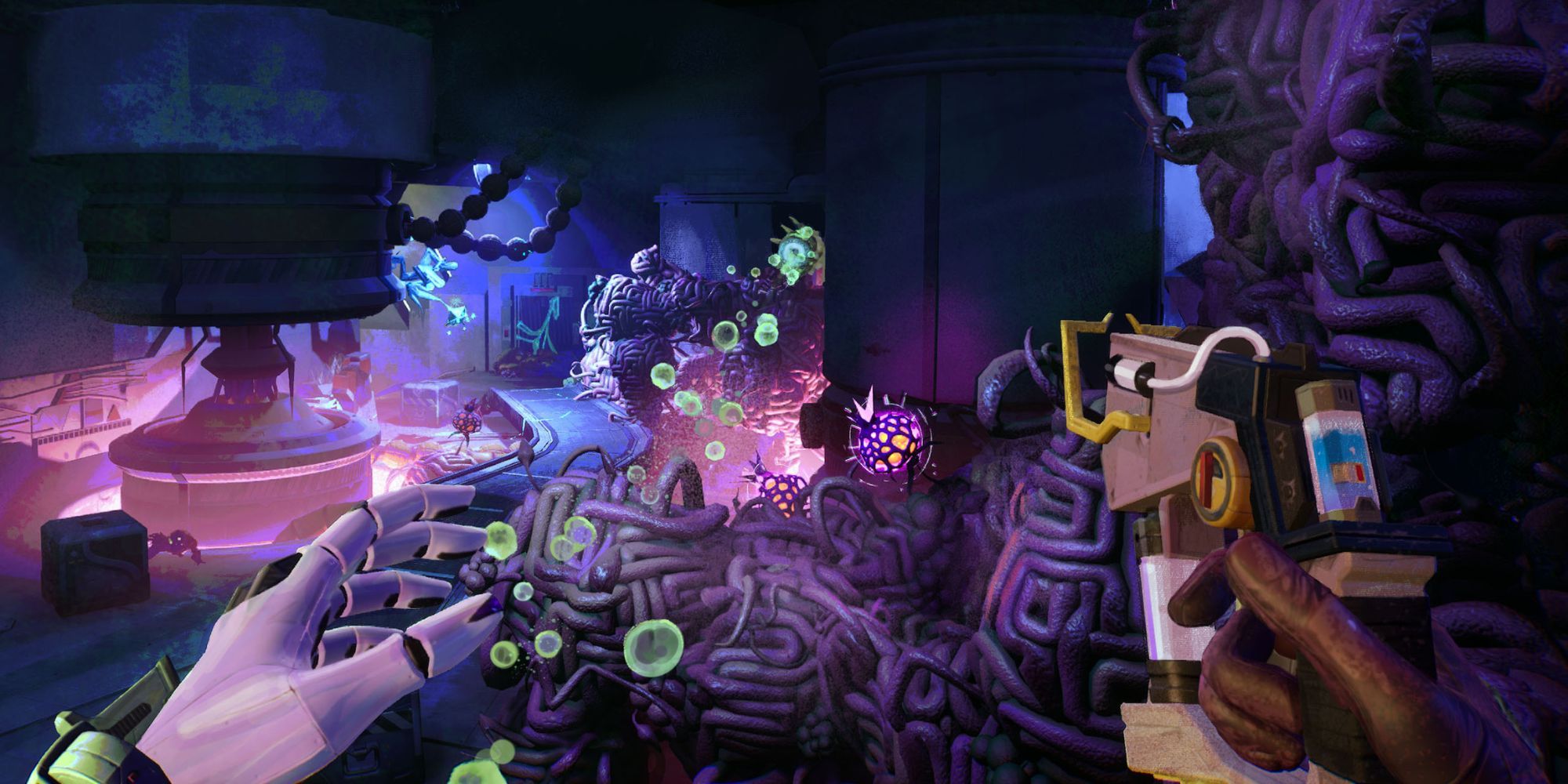Wall and display shelves are essential in maximizing space and enhancing aesthetics, driving their rising popularity across both residential and commercial markets. With the surge in home improvement projects and demand for versatile storage solutions, shelves offer practical elegance by blending form and function. Understanding current market trends, material innovations, and design varieties is crucial for professionals seeking to make informed purchasing decisions. This article provides key insights into the market landscape and details on choosing the right shelving types to suit diverse spaces. By aligning with these insights, businesses can confidently source shelving options that meet consumer demand and add value to any setting.
● Market overview: trends and growth in wall and display shelves
● Exploring popular types and unique features of wall and display shelves
● Key considerations when selecting shelves for your space
● Conclusion

The global wall and display shelves market is valued at and is projected to reach , reflecting a from 2024 to 2031, according to . This growth is driven by increasing consumer interest in functional and decorative shelving solutions, especially as space optimization and aesthetic storage become priorities for residential and commercial settings. Demand has surged due to lifestyle shifts, with more people investing in interior decor and efficient storage solutions that align with modern, urban living spaces.
North America currently holds the largest market share, with . High disposable incomes in the United States and Canada support a strong demand for premium, aesthetically pleasing shelving options across both retail and online channels, as per . Conversely, the Asia-Pacific region is witnessing the fastest growth, spurred by . The growth in this region is also attributed to expanding e-commerce platforms and the adoption of affordable, customizable shelving options suited to varying home sizes and decor preferences.
The popularity of and customization trends continues to rise, particularly in response to the need for flexible and adaptable furniture. Consumers increasingly prefer shelves that combine durability and design, with among the top materials. Wood remains a preferred choice, valued for its and aesthetic appeal, while metal and glass cater to minimalist and modern interior styles, as detailed by and . Product segments such as are also gaining traction, offering versatile, space-saving solutions that enhance interior decor while addressing storage needs.
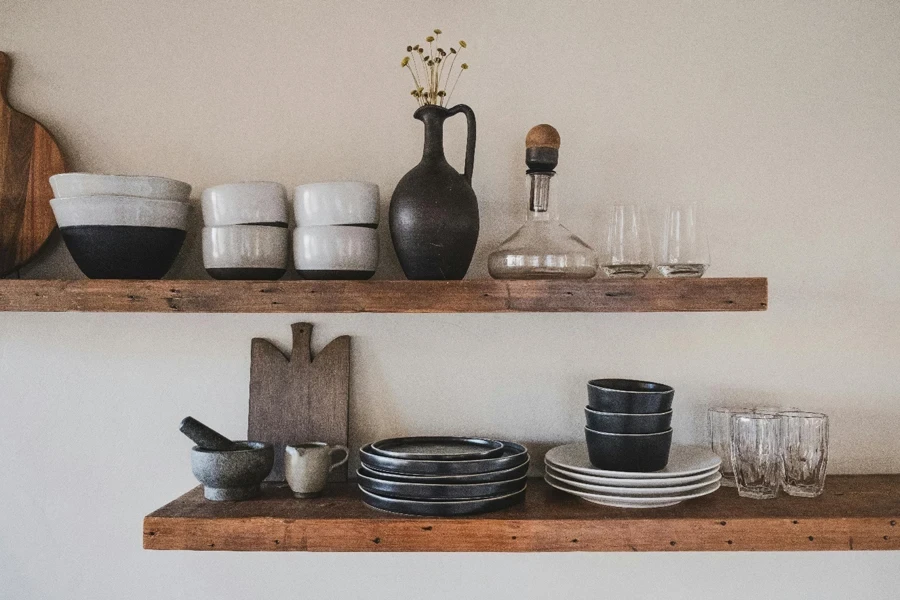
Fixed bracket shelves are designed with that provide extra support, allowing them to hold when mounted into wall studs. These brackets are usually spaced around to ensure maximum stability, making fixed bracket shelves ideal for heavy items or high-traffic areas. The brackets themselves often come in durable materials like , each adding specific weight-bearing capacities and aesthetic appeal. Fixed bracket shelves are often chosen for areas where longevity and robustness are prioritized, such as kitchens or garages, where shelves need to withstand frequent loading and unloading.
Floating shelves use hidden internal supports or “floating” brackets that are drilled directly into the wall. These hidden mounts typically consist of that slide into pre-drilled holes within the shelf, allowing shelves to bear up to depending on the material and mounting style. The thickness of floating shelves varies, often , which can affect the shelf’s load capacity. Proper installation requires attachment to wall studs or specialized anchors to prevent sagging over time. Floating shelves are commonly made of solid wood, MDF, or tempered glass, each providing different strength levels and aesthetic textures, ideal for displaying lightweight items or adding sleek, minimalist storage.
Built-in shelves are typically framed into existing wall spaces, using . These shelves often incorporate materials like , which can hold when properly secured. The depth of built-in shelves generally aligns with standard shelving dimensions, such as , making them versatile for storage and display without overextending into a room. Built-in designs often include additional reinforcement along the frame and back panel, allowing for stable, wall-integrated shelving that can support larger, bulkier items. Customization options, such as adjustable shelves or inset lighting, are also common in built-ins, adding both functionality and visual appeal.
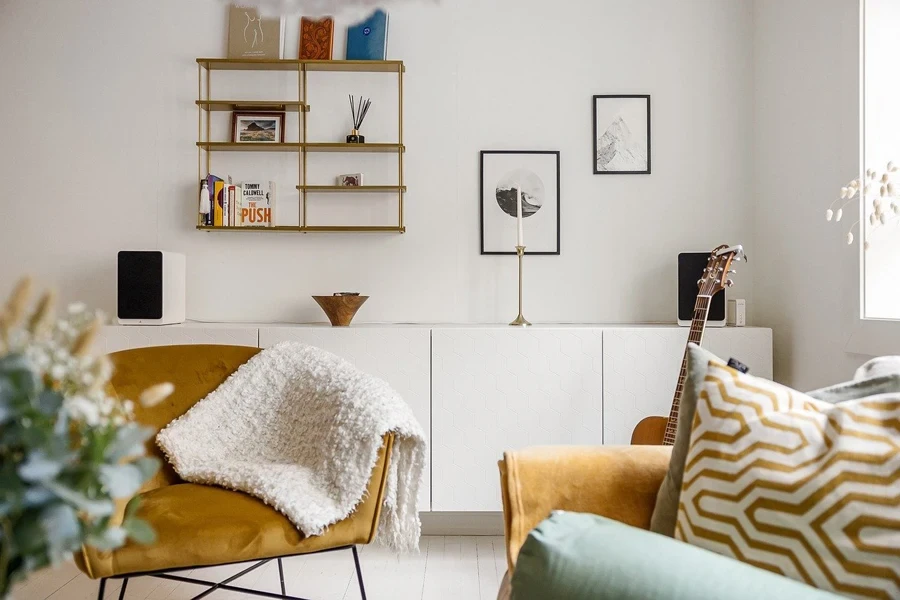
Hanging shelves are suspended using , often anchored into ceiling joists or wall mounts capable of supporting weight vertically. These suspension materials vary in thickness—typically for metal piping or —depending on the intended load, with designs that can handle up to . Installation requires ceiling anchors that can support the combined weight of the shelf and stored items, making these shelves ideal for displaying lighter items in a decorative arrangement. Common shelf materials include reclaimed wood or metal, giving them both durability and an aesthetic suited to industrial or rustic styles.
Cube and box shelves come in modular units that are generally , suitable for displaying small items or organizing clutter. These shelves often use engineered wood or metal frames, providing sufficient stability to hold . The modular design allows multiple units to be stacked or mounted in various configurations, making them adaptable to different spaces. Some models include built-in anchors or wall fasteners to secure the cubes individually, adding stability, especially for larger displays. High-quality versions may feature reinforced joints or connectors, ensuring that even stacked configurations maintain alignment and integrity.
Specialized shelving types, like ladder, tension rod, and ceiling-mounted shelves, offer unique storage solutions with specific technical considerations. lean against the wall at an angle, relying on friction and angled rungs for stability; these shelves typically support when the base is positioned securely against the floor. use adjustable rods that compress between the floor and ceiling, supporting light storage loads of due to the distributed pressure design. Ceiling-mounted shelves, commonly found in kitchens or commercial settings, are mounted with steel or aluminum brackets drilled into ceiling joists and can support when using industrial-grade hardware. These specialized shelves are optimized for unique spatial requirements, providing effective solutions for temporary or flexible storage.
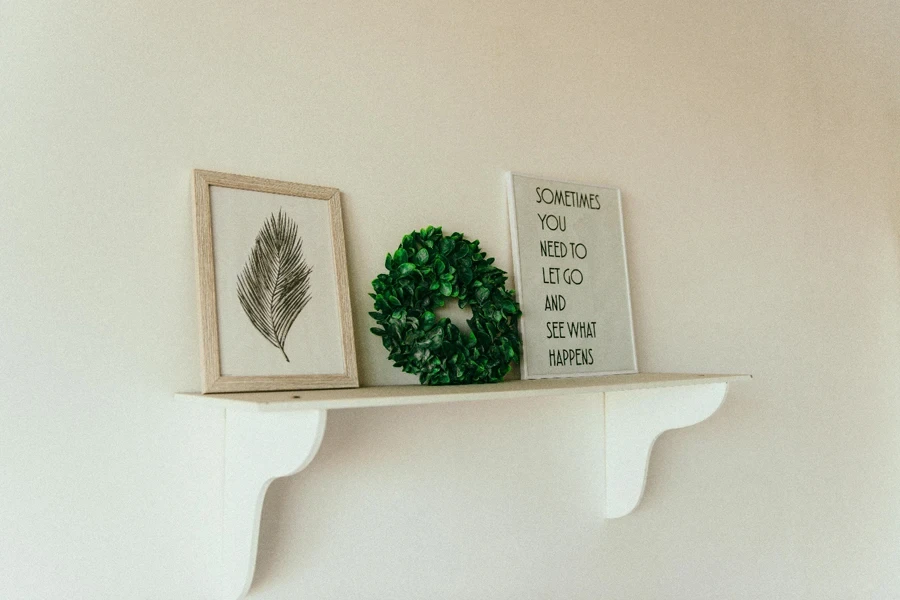
Selecting the right shelving starts with defining its , as shelves can serve storage, display, or multipurpose functions in both residential and commercial settings. For heavy-duty storage, such as in garages or offices, sturdy options like provide the load capacity and stability necessary for supporting equipment and inventory. Display shelves, by contrast, are typically lightweight and more decorative, such as , ideal for showcasing items like photos, art pieces, or plants. Understanding the specific function helps guide material and structural choices, ensuring the shelves effectively meet user needs.
The material of the shelving plays a critical role in its . , often crafted from solid wood, MDF, or plywood, offer warmth and aesthetic versatility but may require extra maintenance, such as sealing, in humid spaces. , particularly stainless steel or powder-coated iron, resist corrosion and are easy to clean, making them suitable for where water exposure or hygiene is a concern. , typically made from tempered glass, add a modern touch and help spaces feel open but are more prone to scratches or breakage, making them better suited for lighter loads or decorative use. Each material offers distinct , aligning with specific room requirements and aesthetic goals.
The choice of location impacts both the type of shelf and its , as different wall types and spatial layouts require tailored solutions. require sturdy walls, such as those with drywall and studs, to support the anchors and avoid damage or sagging. In contrast, are ideal in areas where wall mounting is challenging or undesirable, as they avoid wall damage while providing mobility. The available wall space and ceiling height also play roles, with adjustable or custom-fit shelves offering flexibility for spaces with non-standard dimensions. For renters or temporary setups, are recommended, as they require minimal installation and avoid permanent alterations.
Matching shelf style to the room’s existing decor ensures the shelving integrates seamlessly while enhancing the overall aesthetic. For a , floating or glass shelves work well, as their unobtrusive design highlights displayed items without drawing attention to the shelf itself. often benefit from metal and reclaimed wood shelves, as these materials complement exposed beams, pipes, and earthy color schemes. Geometric and cube shelves bring a unique flair to contemporary and eclectic interiors, allowing users to personalize their space with configurations that suit both .
Choosing sustainable shelving options is increasingly important, especially with the availability of eco-friendly materials like recycled wood or FSC-certified timber. These materials meet environmental standards while providing the natural aesthetics and durability of traditional wood. Metal shelving, particularly aluminum, is also valued for its recyclability and long-lasting properties, suitable for high-traffic areas that need robust solutions. Additionally, sustainably sourced and durable materials are less prone to frequent replacements, making them cost-effective and environmentally responsible choices for both residential and commercial use.
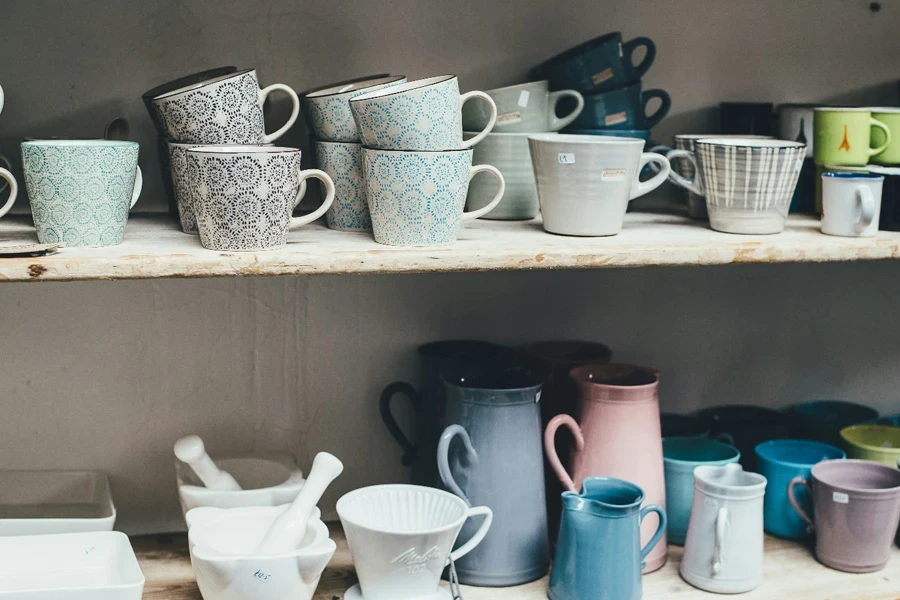
Wall and display shelves play a crucial role in maximizing space while enhancing the aesthetic appeal of any setting, whether residential or commercial. Selecting the appropriate type and material can make a significant difference in functionality, durability, and design cohesion, ensuring shelves not only meet storage needs but also contribute to the decor. By aligning shelf choices with intended use, decor style, and sustainable materials, businesses can offer products that bring both practical value and visual enhancement to diverse environments. This careful selection supports long-lasting, versatile shelving solutions that adapt to evolving design trends and user requirements.










